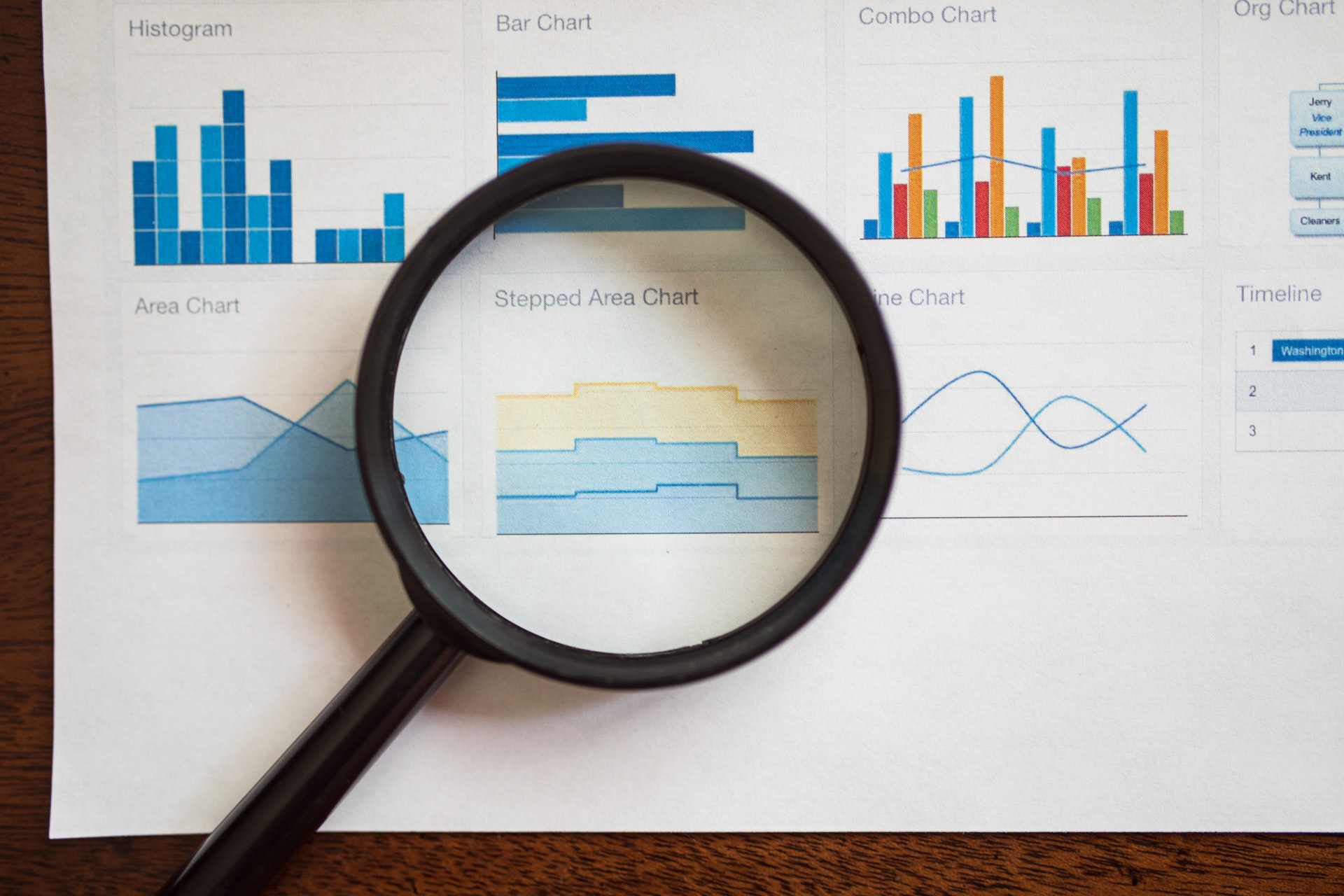 A cross-sectional study (cross-sectional analysis or transverse study) offers an overview of a specific population in terms of an outcome at a given point in time. It is akin to taking a “slice” or cross-section of a population. Cross-sectional studies are used in the fields of healthcare, social sciences, and economics. In this article, we cover cross-sectional study definition, its purpose, characteristics, and types of cross-sectional studies with examples. We also outline the advantages and disadvantages of cross-sectional studies and answer some of the most frequently asked questions.
A cross-sectional study (cross-sectional analysis or transverse study) offers an overview of a specific population in terms of an outcome at a given point in time. It is akin to taking a “slice” or cross-section of a population. Cross-sectional studies are used in the fields of healthcare, social sciences, and economics. In this article, we cover cross-sectional study definition, its purpose, characteristics, and types of cross-sectional studies with examples. We also outline the advantages and disadvantages of cross-sectional studies and answer some of the most frequently asked questions.
What is a cross-sectional study?
So, “what is a cross-sectional study?” Here is a simple cross-sectional study definition: A cross-sectional study is an observational study design that examines data on various variables gathered at a single time point within a sample population or predefined subgroup, offering a depiction of the population’s characteristics.
It is a time-saving, cost-effective, and straightforward approach for gathering preliminary data, wherein a researcher collects data at a single point in time (there is no prospective or retrospective follow-up) and observes variables without influencing them. The prevalence of an outcome at a given point in time can be determined in this manner.
What is the purpose of a cross-sectional study?
The purpose of a cross-sectional study is basically to take a “slice” or a “snapshot” of a population. In the fields of epidemiology and public health research, cross-sectional studies are used to evaluate associations, e.g., between exposure and disease, and to compare disease and symptom rates between an exposed group and an unexposed group.
Another purpose of a cross-sectional study is to simultaneously describe multiple characteristics. For instance, it can be employed to explore whether factors like excessive screen time, social media use, and resulting social pressures are linked to specific outcomes such as anxiety.
While such studies cannot establish a causal link and do not quantify a variable, they can highlight a relationship that might be worth further investigation. One of the advantages of a cross-sectional study is that it plays a key role in developing hypotheses and in laying the foundation for a more comprehensive research project.
Characteristics of a cross-sectional study
Now, let’s delve into the key characteristics of a cross-sectional study:
- Cross-sectional studies examine a fixed set of variables within a specific timeframe. Researchers use the same measuring tools and data points throughout their investigation.
- Although different cross-sectional studies may focus on the same variable of interest, they do so by observing distinct groups of subjects; each study captures a fresh set of participants.
- Cross-sectional analyses focus on a single point in time, marked by a clear starting and stopping point.
- In a cross-sectional study, researchers can zero in on a single independent variable, while also accommodating one or more dependent variables in their examination.
These studies can map the prevailing variables that coexist at a specific point in time. For instance, cross-sectional data can reveal the buying preferences of a population at a given time and how they correlate with economic trends.
Cross-sectional study examples
From the following cross-sectional study examples, we see that these studies gather data from participants sharing similarity across most variables, except for the variable(s) under scrutiny.
Some fictional cross-sectional study examples across various fields are as follows:
Agriculture: Examining pesticide use and knowledge of smallholder farmers in a specific region.
Nutrition: Fruit and nut consumption in a region according to gender and educational level.
Psychology: Psychological impact of the COVID-19 pandemic on healthcare workers in a region.
Economics: Economic burden of unemployment during armed conflict in a particular region.
Psychology: Psychological status of male prisoners at a particular facility.
Healthcare and medicine: (i) Population-based surveys, e.g., the prevalence of twin births in a village, or (ii) prevalence in clinical studies, e.g., antibiotic resistance in Clostridium difficile isolates in a tertiary care hospital.
Cross-sectional studies equip scholars and policymakers with actionable data that can be acquired quickly, facilitating informed decision-making and the development of products or services.
Types of cross-sectional studies
The main types of cross-sectional studies are d
escriptive, analytical, and repeated/serial.
Descriptive cross-sectional studies: These characterize the prevalence of one or more outcomes in a particular population, e.g., examining the prevalence of Alzheimer’s disease in a target population.
Analytical cross-sectional studies: Data are obtained for both exposure and outcome at a specific point in time to compare the outcome differences between exposed and unexposed subjects. Such studies answer how or why a certain outcome might occur, e.g., looking at vascular disease, traumatic brain injury, and family history to explain why some adults are much more likely to get Alzheimer’s disease than others.
Repeated (or serial) cross-sectional studies: Data are obtained from the same target population at different time points. At each time point, researchers select a different sample (different subjects) from the same target population. Repeated cross-sectional studies can therefore examine changes in a population over time. An example of serial cross-sectional study could be one that investigates the prevalence and risk factors of Alzheimer’s disease in adults aged 50-80 years in a specific decade.
Advantages and disadvantages of cross-sectional studies
Let’s look at the pros and cons of cross-sectional studies.
Advantages of a cross-sectional study
- Relatively quick and inexpensive to conduct
- No potential ethical issues
- Multiple outcomes and exposures can be studied
- Helpful for generating hypotheses
- Many findings can be used to create an in-depth research study
- Data are obtained from a large pool of subjects, and differences between groups can be compared.
Disadvantages of a cross-sectional study
- Cannot measure incidence
- Deriving causal inferences is challenging as it is a one-time measurement of the apparent cause and effect
- Associations identified might be difficult to interpret
- Cannot determine temporal relations between outcomes and risk factors
- Not suitable for studying rare diseases or sporadic events
- Susceptible to biases
- Cannot be used to analyze trends over a period of time.
Limitations of cross-sectional studies
It is important to know the limitations of cross-sectional studies. Here are some important limitations:
- A cross-sectional study is a one-time measurement of exposure and outcome. Therefore, it does not determine cause-and-effect relationships.
- Such studies are prone to certain biases: report bias (because surveys and questionnaires might not result in accurate reporting) and sampling bias (owing to the need to select a sample of subjects from a large and heterogeneous study population).
- Researchers need to be extremely careful about interpreting the associations and direction of associations from cross-sectional studies.
- Cross-sectional surveys may not be sufficient to understand disease trends. In clinical studies, the prevalence of an outcome depends on disease incidence and length of survival following the outcome.
- One of the disadvantages of a cross-sectional study is that it does not provide information from before or after the data were obtained.
- Cross-sectional studies cannot be used to analyze behavior or trends over time.
Cross-sectional vs. longitudinal studies
It is critical to understand the key features of cross-sectional vs. longitudinal studies before you choose the study design to answer your research question. While both cross-sectional and longitudinal studies are observational, not requiring manipulation of the study environment, they differ in a number of ways (Table).
Table: Cross-sectional vs. longitudinal studies
| Cross-sectional Study | Longitudinal Study |
| Data of a characteristic of a population are collected at one point in time. | Data from a population are collected at multiple time points over an extended period. |
| There are different individuals at each time point. | The same individuals are followed over time. |
| It is less time- and resource-intensive. | It requires more time and resources. Results can be affected by participants quitting the study before the data have been fully collected. |
| It cannot determine causality but is a good starting point to establish associations between variables. | It is used for studying cause and effect. |
| It provides a “slice” of the population at a particular moment.
|
It tracks changes over time. Variables can evolve over a prolonged period. Therefore, researchers can use longitudinal data to detect changes in a population and establish patterns. |
| Example: A cross-sectional study collecting data from a group of children of various ages to see if there is any association between the amount of time they spend on screens (e.g., watching TV, using smartphones or computers) and their grades in school.
Data analysis shows a negative correlation between high screen time and lower grades in middle-school-aged children, but this correlation does not hold as strongly for high-school-aged children.
|
Example: Based on these findings from the cross-sectional study, you decide to design a longitudinal study to explore this relationship in more detail, focusing on middle-school-aged children. Without initially conducting the cross-sectional study, you would not have decided to focus on this age group, and you might not have chosen to investigate it further.
|
Frequently asked questions
What is a cross-sectional study?
A cross-sectional study is a type of observational research design that involves collecting data from a group of participants at a single point in time to assess various characteristics or variables of interest.
What is the purpose of a cross-sectional study?
The primary goal of a cross-sectional study is to describe the prevalence of a specific condition or characteristic within a defined population at a particular moment in time.
What are some advantages of cross-sectional studies?
Cross-sectional studies are relatively quick and cost-effective. They are useful for generating hypotheses and identifying potential research directions.
What are the limitations of a cross-sectional study?
Cross-sectional studies do not allow researchers to track changes over time, making them unsuitable for studying temporal relationships. They cannot establish cause-and-effect relationships.
Can cross-sectional studies be used to study rare conditions or events?
Cross-sectional studies are not the best choice for studying rare events because of the need for a sufficiently large sample size to obtain meaningful results.
What are some suitable cross-sectional study examples?
Some potential cross-sectional study examples could be determining (i) the prevalence of obesity in teenagers from high-income families; (ii) the prevalence of accelerated skin aging, and the association between skin wrinkles and sunscreen application in women; or (iii) the prevalence and risk factors and geographic of reduced visual acuity in secondary students in a specific decade.
References
Setia, M. S. Methodology Series Module 3: Cross-sectional studies. Indian J Dermatol. (2016) 61(3): 261–264. doi: 10.4103/0019-5154.182410
Wang, X., & Cheng, Z. Cross-sectional studies: strengths, weaknesses, and recommendations. Chest (2020) 158(1) Suppl, S65–S71. https://doi.org/10.1016/j.chest.2020.03.012
R Discovery is a literature search and research reading platform that accelerates your research discovery journey by keeping you updated on the latest, most relevant scholarly content. With 250M+ research articles sourced from trusted aggregators like CrossRef, Unpaywall, PubMed, PubMed Central, Open Alex and top publishing houses like Springer Nature, JAMA, IOP, Taylor & Francis, NEJM, BMJ, Karger, SAGE, Emerald Publishing and more, R Discovery puts a world of research at your fingertips.
Try R Discovery Prime FREE for 1 week or upgrade at just US$72 a year to access premium features that let you listen to research on the go, read in your language, collaborate with peers, auto sync with reference managers, and much more. Choose a simpler, smarter way to find and read research – Download the app and start your free 7-day trial today!




